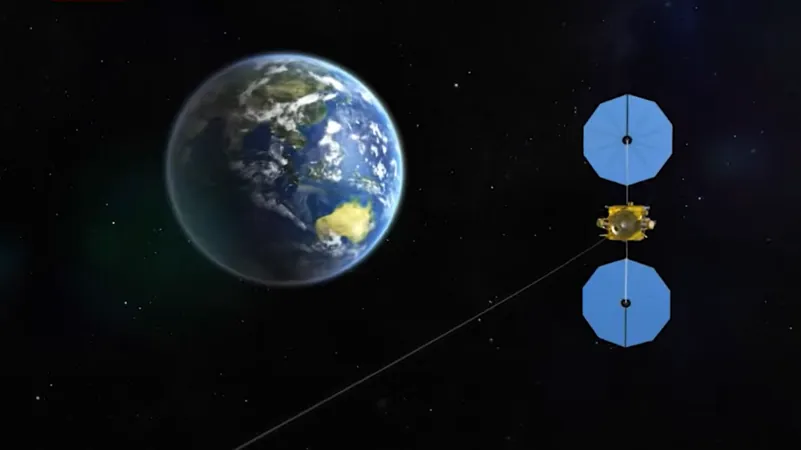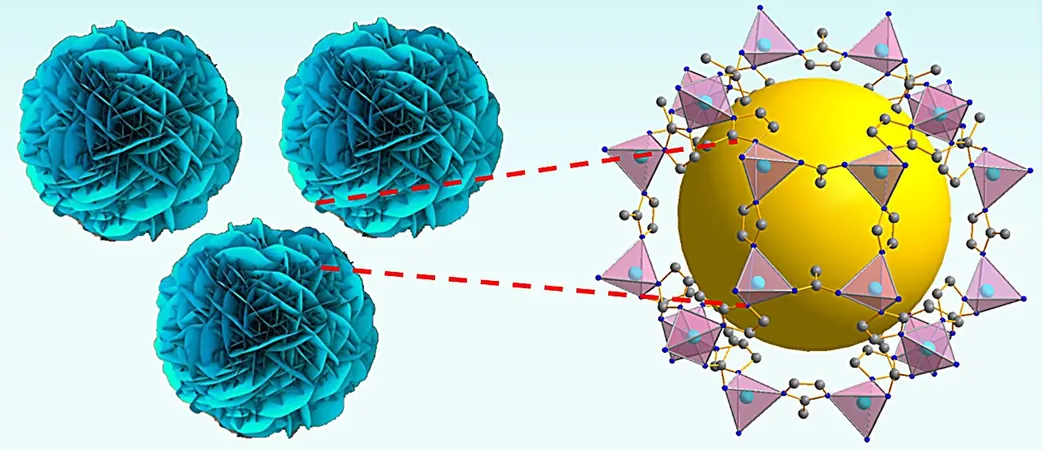
China's Ambitious Mission to Uncover Secrets of a Mysterious Quasi-Moon
2025-06-15
Author: Daniel
Groundbreaking Space Mission Launches
In an exciting leap for space exploration, a Chinese spacecraft is embarking on a daring mission to visit one of Earth's enigmatic quasi-moons, with aspirations to collect samples and expand our knowledge of the solar system. The Tianwen-2 probe, launched on May 28 via a Long March 3B rocket, is currently over 3 million kilometers from Earth, making its way to the near-Earth asteroid Kamoʻoalewa.
Unveiling Tianwen-2's First Images
The China National Space Administration (CNSA) recently released the first image from this ambitious mission, marking a historic moment for China's burgeoning space program. The probe's design bears a striking resemblance to NASA’s Lucy mission, which is actively exploring Trojan asteroids near Jupiter. Until now, the public had only seen artistic sketches of Tianwen-2.
Kamoʻoalewa: An Orbital Mystery
The target, Kamoʻoalewa, is one of seven known quasi-moons—celestial bodies that seem to orbit Earth yet are fundamentally bound to the Sun. Discovered in 2016 by Hawaiian astronomers, its name translates to 'oscillating celestial object.' Sized between 40 to 100 meters in diameter, Kamoʻoalewa follows a trajectory closely mirroring Earth's, sitting roughly 12 times farther away than our moon.
One captivating hypothesis suggests that Kamoʻoalewa could be a fragment of the Moon, potentially ejected during a historical collision. Researchers believe that analyzing its surface and retrieving samples may unlock clues about its origin. This knowledge may also inform assessments about threats posed by unstable nearby space objects.
A Dual Mission Adventure
Tianwen-2 is set to reach Kamoʻoalewa by July 2026 after making course adjustments using engine burns. Upon nearing the asteroid, it will spend months orbiting, scrutinizing the surface to find an ideal landing site. The low gravitational force of Kamoʻoalewa presents a unique challenge for the landing, demanding meticulous precision.
Once samples are collected, the spacecraft will chart its return to Earth, targeting a reentry capsule arrival in late 2027. But the adventure doesn't end there! Harnessing Earth's gravity for a slingshot maneuver, Tianwen-2 will set its sights on 311P/PANSTARRS, an intriguing main-belt comet known for its comet-like tails, expected to reach it around 2035.
China's Increasing Space Prowess
This isn't the first time China has ventured into deep space. The Tianwen-1 mission, launched in 2020, included a rover and orbiter exploring Mars, while the Chang’e 5 mission brought lunar samples back to Earth in the same year, followed by the Chang’e 6 mission that retrieved samples from the moon’s far side in 2024. These ambitious projects illustrate China's escalating interest in planetary science and exploration. Notably, Tianwen-2 is projected to have a mission duration of nearly ten years, probing both asteroids and comets, which could yield vital insights into the origin of water on Earth and the solar system's broader history.
A Pivotal Moment for Space Exploration
As Tianwen-2 inches closer to its groundbreaking target, the global community will be watching intently. Success in this mission could pave the way for significant advances in planetary science and asteroid studies, vital for future endeavors aimed at asteroid threat mitigation. This endeavor not only showcases China's daring technological advancements but also its commitment to exploring the cosmos. As Tianwen-2 journeys deeper into the untamed universe, it may uncover the mysteries of Kamoʻoalewa and inspire a new generation of explorers eager to reach for the stars.

 Brasil (PT)
Brasil (PT)
 Canada (EN)
Canada (EN)
 Chile (ES)
Chile (ES)
 Česko (CS)
Česko (CS)
 대한민국 (KO)
대한민국 (KO)
 España (ES)
España (ES)
 France (FR)
France (FR)
 Hong Kong (EN)
Hong Kong (EN)
 Italia (IT)
Italia (IT)
 日本 (JA)
日本 (JA)
 Magyarország (HU)
Magyarország (HU)
 Norge (NO)
Norge (NO)
 Polska (PL)
Polska (PL)
 Schweiz (DE)
Schweiz (DE)
 Singapore (EN)
Singapore (EN)
 Sverige (SV)
Sverige (SV)
 Suomi (FI)
Suomi (FI)
 Türkiye (TR)
Türkiye (TR)
 الإمارات العربية المتحدة (AR)
الإمارات العربية المتحدة (AR)